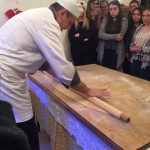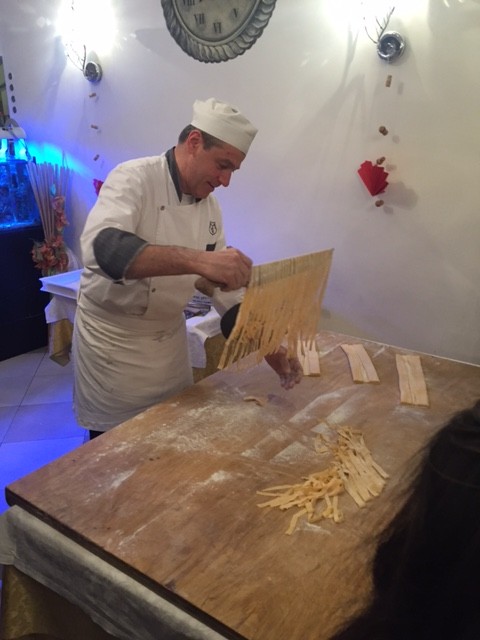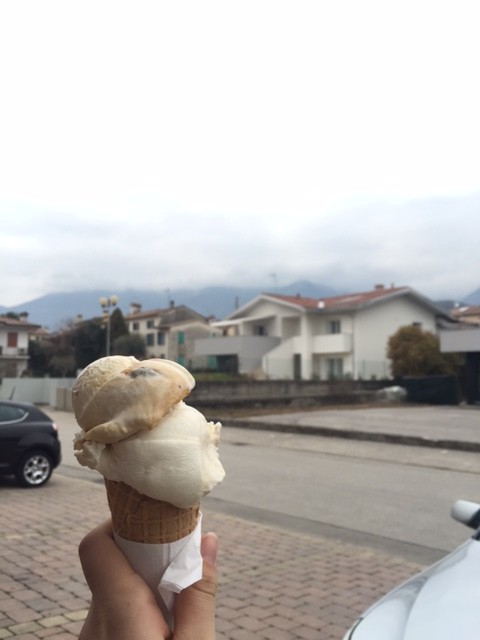
Navigating the Italian Culture
Written by Mallory February 21, 2017









After spending a little over a month in Italy, I have learned a few things about the cultural norms here. At first I found some of them annoying but now I am gaining a better understanding of why Italians do what they do and how I can better submerge myself into the Italian culture.
Food and Drink Cultural Tips:
- Breakfast is practically nothing compared to the huge American breakfast I am used to at home. A typical Italian breakfast consists of a small variety of pastries, croissants, and donuts, hard boiled eggs, a selection of breakfast cereals, and a meat and cheese platter. I was not used to this when I first got here but as I have been adjusting, my stomach has learned to not eat as much in the morning because the lunch and dinner portions here are huge! Italian’s also love their coffee so unsurprisingly, CIMBA has a fairly wide variety of coffee options in the morning. There are also no mugs to drink from in the morning so we use bowls to drink our coffee and tea. Kinda weird when we first got here but totally normal now!
- Coffee in Italy is not like coffee in America. Just accept that fact now and you will be completely fine upon arrival in Italy. I don’t typically drink coffee at home so I didn’t have too many expectations when coming here. From what I have learned, un caffe (a shot of espresso) has a ton of caffeine and will keep you awake all hours of the day or night depending on how early or late in the day you drink it. Cappuccinos are typically only served in the morning and a caffe Americano is what a typical American would like to drink and this is what you should order when at a bar – a bar serves coffee and pastries.
- Manners are huge in Italy. The Italians take this very seriously and you will be stared at when you don’t behave properly at the dinner table. Some of the manners I have picked up on include not speaking too loud when having a conversation – this is so other people are not disturbed and the restaurants remain a calm atmosphere. The biggest change for me is how to properly hold silverware. I usually cut my food with both hands and then eat with my fork in my right hand whereas in Italy it is appropriate to cut the food with utensils in both hands and eat with the fork in your left hand so you are not switching the fork between your left and right hand. Italians also DO NOT use a fork and spoon to eat spaghetti. I’m not sure how Americans picked this one up but it is proper form in Italy to get the amount of spaghetti desired to the side of the plate and twirl it lightly against the plate rather than twirling it on a spoon.
- Tipping is not required in Italy. This has made restaurant bills much easier to split up because there is no tip to calculate at the end of every meal. Generally speaking, Europeans do not work in the food service industry for some cash on the side like Americans do. Europeans are paid more to wait tables which makes up for the tipping. Taxes are also generally included on the price listed on the menu. This was a pleasant surprise at the end of my first meal because I only had to pay exactly what was listed on the menu and not a cent more.
Sight-seeing Cultural Tips:
- Throughout Italy there are hundreds of thousands of churches to visit. In the small town of Paderno (about 2,000 inhabitants) there are around eleven different churches, just to give a better idea of how many churches are actually here. When traveling to the bigger cities and visiting the amazing Basilicas, it is common practice to have shoulders and knees covered, even in the summer. While I haven’t had any troubles with this since it has been cold here, I have heard stories of visitors being turned away for not being dressed properly.
- Research the places you want to visit before you get there. I have had some trouble with this because of the fast-paced life I am living at CIMBA but I highly recommend doing a fair amount of research before getting off the plane or train in the city you are going to. For example, when I went to Rome I knew I wanted to go inside the Colosseum. We found out on the first Sunday of every month the Colosseum had free entry and knowing this helped us better plan our weekend since we happened to be in Rome the first weekend of the month! It also is not a bad idea to find out what you want to do for sure and buy tickets ahead of time online. This will help you skip the lines waiting to get in which are generally extremely long.
- Merchants in the street are there to make as much money off the tourists as possible. Unless you are completely sure you want to buy whatever it is they are selling, I would suggest politely telling them “no, grazie” when they come up to you. I made the mistake of asking someone how much their item was and had no intentions of purchasing it. The man proceeded to follow us for 5 minutes trying to get my to buy his selfie-stick. He initially said it would cost 10 euro and by the end of him following us, he was down to 2 euro. He was not being rude, just trying to make a living even though it was annoying for me. That’s the last time I will ask about something unless I am completely sure I want to buy it.
Cultural Life Tips:
- Dates are listed as day/month/year. This has become a serious problem when trying to book travel because it can be somewhat confusing. Make sure to double check every date because people have already been mixing up the days and losing money on plane flights due to confusion about how the dates are written.
- Timing is also a different world over here. The majority of Europe, if not all of it, runs on military or 24 hour time. This has been a huge adjustment for me because I have had some major confusion in understanding that 16:45 means 4:45 pm. People have also been mixing the timing up for planes and trains and are sometimes not able to make their flight due to a misunderstanding on how the times are written.
- Do not be surprised when your credit card is not accepted in Italy or Europe. Italy is very cash based and I always make sure I have enough cash to cover what I am purchasing since I know my credit card might not always be accepted. With that, I use my credit card whenever I can so I save the cash on me in case of an emergency situation.
- Most everyone in Europe speaks English, which is extremely helpful for those who don’t speak the native language. However, the locals love it when we try to speak even a little bit of Italian. Right now, I am building a relationship with the owner of Al Sole where he is teaching me Italian and I am teaching him English.
Hopefully with these tips and tricks, navigating the Italian Culture will be so much easier!
Ciao!













